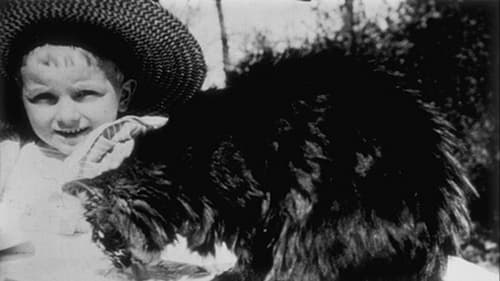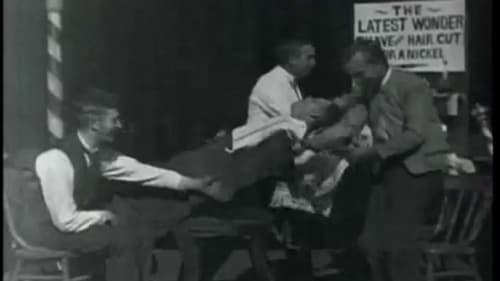Robetta and Doretto, No. 1 (1895)
장르 :
상영시간 : 1분
연출 : William K.L. Dickson
시놉시스
Scene represents section of the interior of a Chinese Opium Den.

One of the pictures to be seen in the machine, for example, was that of a blacksmith shop in which two men were working, one shoeing a horse, the other heating iron at the forge. One would be seen to drive the nail into the shoe of the horse's hoof, to change his position and every movement needed in the work was clearly shown as if the object was in real (life). In fact, the whole routine of the two men's labor and their movements for the day was presented to the view of the observer.

A short black-and-white silent documentary film featuring one dog jumping through hoops and another dancing in a costume, which was considered lost until footage from an 1896 Fairground Programme was identified as being from this film.

The Glenroy Brothers perform a portion of their vaudeville act, "The Comic View of Boxing: The Tramp & the Athlete".

Former lightweight boxer Billy Edwards, now a trainer and writer of the sport, takes on a challenger named Warwick in an exhibition match. The match is scheduled for five rounds of 20 seconds each. A large crowd has gathered behind the ring to watch the fight.

An 1895 British short black and white silent comedy film featuring two drunken men and a boy squabbling in a small bar.

Princess Ali, of Barnum and Bailey's circus, performs an Egyptian dance in the Edison Company's studio. As she dances, some musicians perform in the background to provide accompaniment.

Annabelle Dances in William K.L. Dickson's 1894 short film

A policeman catches a pickpocket with the assistance of a passing a sailor.

A scene from Charles Hoyt's 'A Milk White Flag': A brass band marches out, led by bandmaster Steele Ayers. When Ayers reaches his position, he turns around and directs the musicians as they take up their own positions.

From Edison films catalog: One of the most peculiar customs of the Sioux Tribe is here shown, the dancers being genuine Sioux Indians, in full war paint and war costumes. 40 feet. 7.50. According to Edison film historian C. Musser, this film and others shot on the same day (see also Buffalo dance) featured Native American Indian dancers from Buffalo Bill's Wild West show, and represent the American Indian's first appearance before a motion picture camera.

A photographer has his camera all set up to take a gentleman's picture. The subject checks his face in a hand mirror, and the photographer poses him. Just as the photographer is about to take the picture, the subject gets up to look at the camera more closely. The frustrated photographer soon becomes quite impatient.

A lost film, directed by William K.L. Dickson about two men wrestling.

A small boy brings a plate of milk to a big cat, grooming itself.

Lost film directed by William K.L. Dickson. Presented by Edison Manufacturing Company.

"Firemen in working uniform, rubber coats, helmets, and boots. Thrilling rescue from burning building. Smoke effects are fine." - from the Edison Catalog

A charming representation of the Mikado dance by three beautiful Japanese ladies in full costume. Very effective when colored.

Hadji Cheriff, a performer known for a variety of unusual abilities, demonstrates part of his act in the Thomas Edison studio. He has a large knife in his hand at the opening of the act. He then hurls the knife away and begins a rapid series of dance-like motions, executing numerous cartwheels and whirling movements.

“Interior of Barber Shop. Man comes in, takes off his coat; sits down, smokes; is handed a paper by attendant, who points out a joke; both laugh. Meantime the man in the chair is shaved and has his hair cut. Very funny.” (Edison's Latest Wonders, 1894)

Two gamecocks are fighting inside a wire cage, while two spectators look on in the background. The two men agree to make a bet on the outcome. One of them shows his money to the other, who is commenting on the fight.












